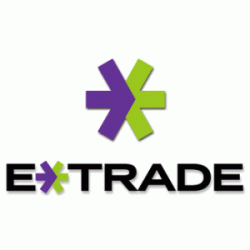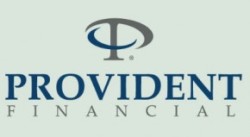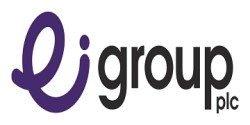E*TRADE Financial (NASDAQ: ETFC) and Provident Financial (NASDAQ:PROV) are both finance companies, but which is the superior investment? We will contrast the two businesses based on the strength of their risk, analyst recommendations, profitability, institutional ownership, valuation, earnings and dividends.
Insider and Institutional Ownership
Get E*TRADE Financial alerts:92.6% of E*TRADE Financial shares are owned by institutional investors. Comparatively, 61.0% of Provident Financial shares are owned by institutional investors. 0.1% of E*TRADE Financial shares are owned by insiders. Comparatively, 12.7% of Provident Financial shares are owned by insiders. Strong institutional ownership is an indication that large money managers, hedge funds and endowments believe a stock is poised for long-term growth.
Volatility and Risk
E*TRADE Financial has a beta of 1.19, meaning that its stock price is 19% more volatile than the S&P 500. Comparatively, Provident Financial has a beta of -0.01, meaning that its stock price is 101% less volatile than the S&P 500.
Analyst Recommendations
This is a breakdown of recent ratings and price targets for E*TRADE Financial and Provident Financial, as provided by MarketBeat.com.
| Sell Ratings | Hold Ratings | Buy Ratings | Strong Buy Ratings | Rating Score | |
| E*TRADE Financial | 0 | 2 | 12 | 1 | 2.93 |
| Provident Financial | 0 | 2 | 0 | 0 | 2.00 |
E*TRADE Financial presently has a consensus target price of $66.80, indicating a potential upside of 10.63%. Provident Financial has a consensus target price of $19.50, indicating a potential upside of 5.81%. Given E*TRADE Financial’s stronger consensus rating and higher possible upside, research analysts clearly believe E*TRADE Financial is more favorable than Provident Financial.
Profitability
This table compares E*TRADE Financial and Provident Financial’s net margins, return on equity and return on assets.
| Net Margins | Return on Equity | Return on Assets | |
| E*TRADE Financial | 29.13% | 13.39% | 1.32% |
| Provident Financial | 3.30% | 4.91% | 0.51% |
Dividends
Provident Financial pays an annual dividend of $0.56 per share and has a dividend yield of 3.0%. E*TRADE Financial does not pay a dividend. Provident Financial pays out 80.0% of its earnings in the form of a dividend, suggesting it may not have sufficient earnings to cover its dividend payment in the future. Provident Financial has raised its dividend for 7 consecutive years.
Earnings and Valuation
This table compares E*TRADE Financial and Provident Financial’s top-line revenue, earnings per share and valuation.
| Gross Revenue | Price/Sales Ratio | Net Income | Earnings Per Share | Price/Earnings Ratio | |
| E*TRADE Financial | $2.37 billion | 6.73 | $614.00 million | $2.19 | 27.57 |
| Provident Financial | $64.61 million | 2.13 | $5.20 million | $0.70 | 26.33 |
E*TRADE Financial has higher revenue and earnings than Provident Financial. Provident Financial is trading at a lower price-to-earnings ratio than E*TRADE Financial, indicating that it is currently the more affordable of the two stocks.
Summary
E*TRADE Financial beats Provident Financial on 14 of the 18 factors compared between the two stocks.
About E*TRADE Financial
 E*TRADE Financial Corporation, a financial services company, provides brokerage and related products and services primarily to individual retail investors under the E*TRADE Financial brand. It also offers investor-focused banking products, primarily sweep deposits to retail investors; Federal Deposit Insurance Corporation insurance services; clearing and settlement services; investment advisory services; and financial corporate services, such as software and services for managing equity compensation plans to its corporate clients. The company provides its services to customers through digital platforms; and a network of industry-licensed customer service representatives and financial consultants through phone, email, and online at two national financial centers, as well as in person through 30 regional financial centers in the United States. E*TRADE Financial Corporation was founded in 1982 and is headquartered in New York, New York.
E*TRADE Financial Corporation, a financial services company, provides brokerage and related products and services primarily to individual retail investors under the E*TRADE Financial brand. It also offers investor-focused banking products, primarily sweep deposits to retail investors; Federal Deposit Insurance Corporation insurance services; clearing and settlement services; investment advisory services; and financial corporate services, such as software and services for managing equity compensation plans to its corporate clients. The company provides its services to customers through digital platforms; and a network of industry-licensed customer service representatives and financial consultants through phone, email, and online at two national financial centers, as well as in person through 30 regional financial centers in the United States. E*TRADE Financial Corporation was founded in 1982 and is headquartered in New York, New York.
About Provident Financial
 Provident Financial Holdings, Inc. operates as the holding company for Provident Savings Bank, F.S.B. that provides community and mortgage banking services to consumers and small to mid-sized businesses in the Inland Empire region of Southern California. It operates through two segments, Provident Bank and Provident Bank Mortgage. The company's deposit products include non-interest-bearing and interest-bearing checking accounts, savings accounts, money market accounts, and time deposits; and loan portfolio comprises single-family, multi-family, commercial real estate, construction, commercial business, consumer, and other mortgage loans. It also originates, purchases, and sells single-family mortgage loans, including second mortgages and equity lines of credit. In addition, the company offers investment services comprising the sale of investment products, such as annuities and mutual funds, as well as trustee services for real estate transactions. It operates 13 full-service banking offices in Riverside County and 1 full-service banking office in San Bernardino County. The company was founded in 1956 and is headquartered in Riverside, California.
Provident Financial Holdings, Inc. operates as the holding company for Provident Savings Bank, F.S.B. that provides community and mortgage banking services to consumers and small to mid-sized businesses in the Inland Empire region of Southern California. It operates through two segments, Provident Bank and Provident Bank Mortgage. The company's deposit products include non-interest-bearing and interest-bearing checking accounts, savings accounts, money market accounts, and time deposits; and loan portfolio comprises single-family, multi-family, commercial real estate, construction, commercial business, consumer, and other mortgage loans. It also originates, purchases, and sells single-family mortgage loans, including second mortgages and equity lines of credit. In addition, the company offers investment services comprising the sale of investment products, such as annuities and mutual funds, as well as trustee services for real estate transactions. It operates 13 full-service banking offices in Riverside County and 1 full-service banking office in San Bernardino County. The company was founded in 1956 and is headquartered in Riverside, California.
 AJ Wealth Strategies LLC grew its position in shares of Schwab US Broad Market ETF (NYSEARCA:SCHB) by 64.0% in the second quarter, according to its most recent 13F filing with the Securities and Exchange Commission (SEC). The institutional investor owned 16,157 shares of the company’s stock after purchasing an additional 6,308 shares during the period. AJ Wealth Strategies LLC’s holdings in Schwab US Broad Market ETF were worth $1,066,000 at the end of the most recent quarter.
AJ Wealth Strategies LLC grew its position in shares of Schwab US Broad Market ETF (NYSEARCA:SCHB) by 64.0% in the second quarter, according to its most recent 13F filing with the Securities and Exchange Commission (SEC). The institutional investor owned 16,157 shares of the company’s stock after purchasing an additional 6,308 shares during the period. AJ Wealth Strategies LLC’s holdings in Schwab US Broad Market ETF were worth $1,066,000 at the end of the most recent quarter. 
 Bankcoin (CURRENCY:[email protected]) traded 17.6% lower against the US dollar during the 1 day period ending at 14:00 PM ET on July 12th. Bankcoin has a market capitalization of $68,852.00 and approximately $5.00 worth of Bankcoin was traded on exchanges in the last day. In the last seven days, Bankcoin has traded 2.4% higher against the US dollar. One Bankcoin token can now be purchased for approximately $0.0067 or 0.00000108 BTC on exchanges.
Bankcoin (CURRENCY:[email protected]) traded 17.6% lower against the US dollar during the 1 day period ending at 14:00 PM ET on July 12th. Bankcoin has a market capitalization of $68,852.00 and approximately $5.00 worth of Bankcoin was traded on exchanges in the last day. In the last seven days, Bankcoin has traded 2.4% higher against the US dollar. One Bankcoin token can now be purchased for approximately $0.0067 or 0.00000108 BTC on exchanges.  Shares of Varian Medical Systems, Inc. (NYSE:VAR) have been assigned an average rating of “Hold” from the twelve brokerages that are covering the company, MarketBeat reports. Three analysts have rated the stock with a sell rating, five have assigned a hold rating and three have issued a buy rating on the company. The average 12-month target price among brokerages that have issued a report on the stock in the last year is $111.29.
Shares of Varian Medical Systems, Inc. (NYSE:VAR) have been assigned an average rating of “Hold” from the twelve brokerages that are covering the company, MarketBeat reports. Three analysts have rated the stock with a sell rating, five have assigned a hold rating and three have issued a buy rating on the company. The average 12-month target price among brokerages that have issued a report on the stock in the last year is $111.29.  Shares of Asure Software Inc (NASDAQ:ASUR) have been given a consensus rating of “Buy” by the eleven analysts that are covering the company, Marketbeat reports. Two investment analysts have rated the stock with a hold rating and nine have given a buy rating to the company. The average 12 month target price among analysts that have updated their coverage on the stock in the last year is $20.40.
Shares of Asure Software Inc (NASDAQ:ASUR) have been given a consensus rating of “Buy” by the eleven analysts that are covering the company, Marketbeat reports. Two investment analysts have rated the stock with a hold rating and nine have given a buy rating to the company. The average 12 month target price among analysts that have updated their coverage on the stock in the last year is $20.40. 
 Peel Hunt reissued their buy rating on shares of EI Group (LON:EIG) in a report released on Monday. Peel Hunt currently has a GBX 165 ($2.20) price target on the stock.
Peel Hunt reissued their buy rating on shares of EI Group (LON:EIG) in a report released on Monday. Peel Hunt currently has a GBX 165 ($2.20) price target on the stock. Handelsbanken Fonder AB grew its stake in shares of Allegion (NYSE:ALLE) by 2.9% in the 1st quarter, Holdings Channel reports. The firm owned 706,010 shares of the scientific and technical instruments company’s stock after acquiring an additional 20,010 shares during the quarter. Allegion makes up about 1.3% of Handelsbanken Fonder AB’s portfolio, making the stock its 21st biggest position. Handelsbanken Fonder AB’s holdings in Allegion were worth $60,216,000 at the end of the most recent reporting period.
Handelsbanken Fonder AB grew its stake in shares of Allegion (NYSE:ALLE) by 2.9% in the 1st quarter, Holdings Channel reports. The firm owned 706,010 shares of the scientific and technical instruments company’s stock after acquiring an additional 20,010 shares during the quarter. Allegion makes up about 1.3% of Handelsbanken Fonder AB’s portfolio, making the stock its 21st biggest position. Handelsbanken Fonder AB’s holdings in Allegion were worth $60,216,000 at the end of the most recent reporting period.  Wall Street analysts predict that Dolby Laboratories, Inc. (NYSE:DLB) will report $317.10 million in sales for the current fiscal quarter, Zacks reports. Five analysts have provided estimates for Dolby Laboratories’ earnings, with the highest sales estimate coming in at $319.62 million and the lowest estimate coming in at $314.31 million. Dolby Laboratories posted sales of $305.67 million during the same quarter last year, which would indicate a positive year over year growth rate of 3.7%. The business is expected to announce its next quarterly earnings results on Tuesday, July 24th.
Wall Street analysts predict that Dolby Laboratories, Inc. (NYSE:DLB) will report $317.10 million in sales for the current fiscal quarter, Zacks reports. Five analysts have provided estimates for Dolby Laboratories’ earnings, with the highest sales estimate coming in at $319.62 million and the lowest estimate coming in at $314.31 million. Dolby Laboratories posted sales of $305.67 million during the same quarter last year, which would indicate a positive year over year growth rate of 3.7%. The business is expected to announce its next quarterly earnings results on Tuesday, July 24th.